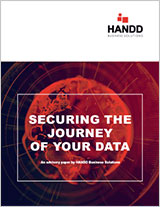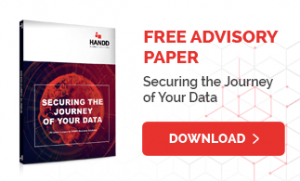DC Blog
Learn how to keep your business, its staff and your devices protected with our free resources
-
Report
The Case for Data Classification
If you don’t know where your data is, or who is accessing it, you shouldn’t be sleeping soundly. In many organisations, everything from personal customer data through to sensitive company secrets languish in obscure folders or network drives, waiting to be lost – or found by the wrong people.
Classifying your data brings it back under your control. It works by enhancing files with information about their contents, called metadata.
A properly classified file can automatically tell programs about itself and the data it holds. It knows what kind of data it has, how sensitive it is, who created it, and when.
You can use this information to secure your data by automatically deciding which employees should see it. Programs can block unauthorised access based on digital policies that you create.
You can also decide whether data should leave your company. Data leak prevention software uses your metadata to determine what kind of information lies in a document, and checks your policies to decide whether an employee can send it externally or not.
You can even control access your data beyond your network. An employee can send files to contractors working for your company, but you can encrypt them and restrict access to only those external partners with the right access privileges.
Files can also be set to expire after set periods based on their data classification, which is useful for documents that can quickly become outdated.
So, data classification gives you more control over the information coursing through your company and beyond. This lets you reassure your customers that their data is in good hands, but it also provides you with regulatory protection. Data classification is one of the best ways to meet compliance requirements, by convincing regulators that you are taking data governance seriously.
It also allows you to satisfy new regulatory requirements as they arise. The EU’s General Data Protection Regulation (GDPR) explicitly lets customers ask for copies of all the data you hold about them, where ever it is in your organisation. They can also demand that you delete it. Classification lets you collect that data quickly and efficiently.
Classifying your data takes planning and access to the right technology, but it creates a platform for future adaptability and agility. Find out more in our Data Classification resources library so that you can rest easy. There’s nothing like peace of mind to promote a good night’s sleep.


